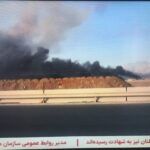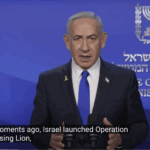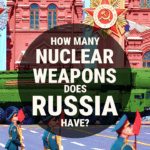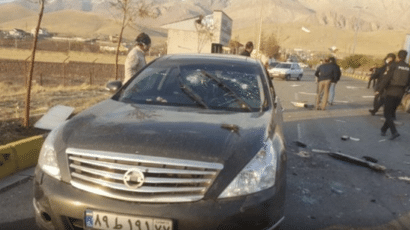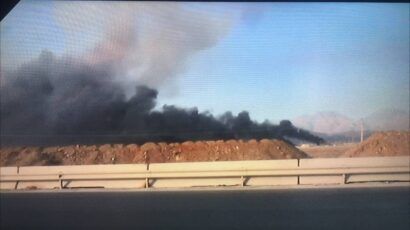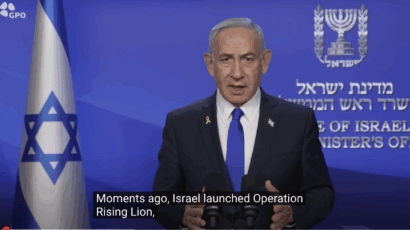A brief look back at what led to Israel’s attack on Iran, from the Bulletin’s archives
By Dan Drollette Jr | June 13, 2025
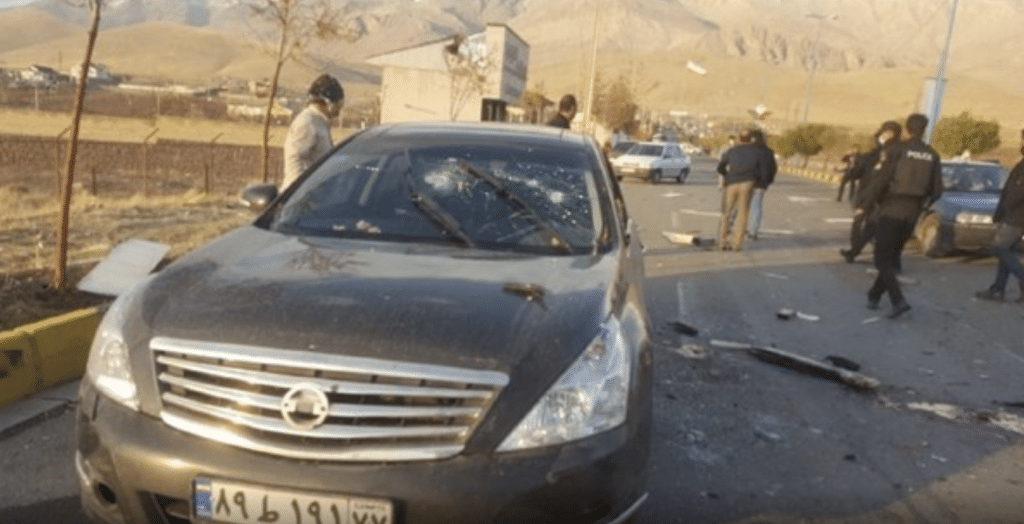 The scene of the 2020 assassination of Iranian nuclear scientist Mohsen Fakhrizadeh. Photo: Fars News Agency
The scene of the 2020 assassination of Iranian nuclear scientist Mohsen Fakhrizadeh. Photo: Fars News Agency
Israel’s attack last night on Iran’s nuclear facilities—and its scientists, and its generals—was stunning.
But not completely unexpected.
For months (if not longer), there had been speculation that Israel’s prime minister, Benjamin Netanyahu, would not be able to resist this tempting target, even if the two countries have historically avoided directly targeting each other’s territories. After all, the strengths of Iran’s proxies were close to an all-time low, its anti-aircraft capabilities were degraded, and it seemed that Iran was on a path to revving-up its nuclear capabilities—making it appear that now was the time to risk an attack. In their 2024 Bulletin article, “Why Iran may accelerate its nuclear program, and Israel may be tempted to attack it” authors Darya Dolzikova and Matthew Savill described this situation in detail, and wrote that there was another motivation for Netanyahu as well: timelines. They said: “[Israel] could attempt a strike in a short period—maybe days or weeks—whereas it would probably take Iran several months to a year from the point of decision to have a viable weapon…”
What this attack means for the future of de-escalation in the Middle East—and indeed any deal over Iran’s uranium enrichment program—does not look promising. A regional nuclear consortium had been proposed by both the United States and Iran as a way to bridge the gap between US demands that Iran have no uranium enrichment and Iran’s insistence that it not give up its rights regarding enrichment. (And some experts did feel that there was some justification to Iran’s stated reasons for peaceful enrichment—such as making more medical radioisotopes; see this 2014 Bulletin article by G.S. Sher, “Are medical radioisotopes contributing to global nuclear insecurity.”)
In “A nuclear consortium in the Persian Gulf as a basis for a new nuclear deal between the United States and Iran,” Frank von Hippel, Alexander Glaser, Zia Mian, and Seyed Hossein Mousavian described how a path to nuclear-related sanctions against Iran could be lifted.
Unfortunately, it’s likely that this strike will give Tehran more reason to escalate, and amp up its future nuclear efforts. “An attack on Iran’s nuclear facilities may have the opposite result of prompting an escalation in Iran’s nuclear developments, a pattern previously observed in response to kinetic actions attributed to Israel. Such an attack could be used by Tehran as a justification and motivation to progress toward nuclear weapons development, confirming that conventional deterrence is insufficient” wrote Assaf Zoran, in the 2024 Bulletinarticle, “The enormous risks and uncertain benefits of an Israeli strike against Iran’s nuclear facilities”.
It’s possible, of course, this attack by Israel’s air force will ultimately prove to have the opposite of its intended result. Iran’s nuclear effort is spread across a wide geographic area, with some facilities so deep underground that the only conventional aerial weapon that could reach them is a monstrously huge bomb like the American GBU-57A/B Massive Ordnance Penetrator, which—weighing in at more than 12 metric tons and over 6 meters long—can only be carried by a relatively small number of bombers, such as the US plane known as the B-2 Spirit. (And the White House said that the US did not contribute militarily.)
Therefore, to get at these sites, Israel seems to have conducted not only repeated aerial strikes on the same underground targets, but engaged in a combined effort that also included sabotage, along with what could only be described as assassinations. The effort was apparently to decapitate Iran’s entire chain of command at once—but it also resulted in the death of one of Iran’s most influential politicians, Ali Shamkhani, who had been overseeing nuclear talks with the United States at the request of Iran’s supreme leader. “Killing him, [Iranian] officials said, was targeting efforts at nuclear diplomacy,” according to today’s New York Times—carrying echoes of the words of Siegfried Hecker in a 2014 Bulletin article, “Ending the assassination and oppression of Iranian nuclear scientists.” Hecker said that assassinations are not only morally indefensible but self-defeating: “These threats against scientists in Iran undermine global peace, targeting experts whose international collaboration is required to deal effectively with the nuclear risks facing the world today. Simply put, killing nuclear scientists makes reducing the threat of nuclear war harder, not easier.”
Together, we make the world safer.
The Bulletin elevates expert voices above the noise. But as an independent nonprofit organization, our operations depend on the support of readers like you. Help us continue to deliver quality journalism that holds leaders accountable. Your support of our work at any level is important. In return, we promise our coverage will be understandable, influential, vigilant, solution-oriented, and fair-minded. Together we can make a difference.
Keywords: Iran, Israel, Natanz, Netanyahu, assassination, nuclear, nuclear program, scientists
Topics: Nuclear Risk


